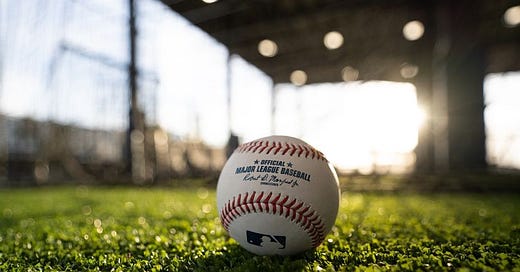Every year around this time i get the age old question from Parents:
"How old should my son be before he throws curve balls? I see people his age doing it but _____ age seems way too early?"
Well, it might be too early. It also might not, there are tons of reasons to throw or not to throw your breaking ball at a younger age.
There are two major schools of thought that will be the biggest impact on your decision:
Are you playing the long term developmental game?
Are you just trying to help your child enjoy the game now, unsure of whether they will play long-term?
These answers are different, and while they're generally not separate from one another, there is some research to show that throwing a breaking ball at a young age is not optimal for development long-term, but not in the way that you'd think.
Long-term developmental game:
If your child or athletes do not struggle in competition, have a perfectly fine time finding success at their current level then throwing a curve ball probably only hurts them in the long run in terms of power development and velocity.
That's right, my biggest "issue" with throwing breaking balls at this age is more about the athletes becoming too passive in their throwing delivery because they're trying to shape the pitch, rather than just let it fly.
This is something you see a lot with kids in all sports, baseball and golf specifically: kids try to learn how to do the finer skills in the game too early, and it takes away from their power development and they have to fight for that in the long run.
This is my main reasoning for avoiding most off-speed pitches, change-ups included in some instances. Not due to arm health, but due to the limited time to develop the quick twitch power output associated with throwing a baseball.
Simply put: the best thing you can do for a pitcher at a young age is throw the ball as hard as you can and learn to throw it for strikes. Taking time to learn a "finesse" pitch only takes away from that.
Current Enjoyment/success is priority, unsure of long-term development:
This is where the decision can become a very case by case basis and I have lowered the age I usually teach people to throw off-speed on because they're worried about other things (that are equally as important).
If your child or athlete struggles on the mound, throws strikes but consistently gives up hits or gets batted around a lot despite his hard work, it might not be the worst idea to throw a breaking ball.
Does this mean start ripping breaking balls at 7? **NO**. But if your child is 10-11 and is really starting to be frustrated by his performance, the easiest way to boost their performance in the short term is by adding a breaking ball.
Point Blank: youth hitters struggle with curve-balls and sliders. They just cannot seem to really get it figured out.
Now, this decision will be your own. But my biggest realization with this is the following:
"There is no reason to save for a future you don't know will exist"
If your child starts to hate baseball, it wont matter if they didn't throw curve balls at 10 years old because by the rime high-school rolls around they're doing something else. Baseball isn't for everyone, but if your child loves it but is struggling, this might be the decision for you to make.
**IF** you enjoyed this email, please look into sharing it with your friends, teammates or co workers that share the same issue. The Right Spot is centered around helping as many people as we possibly can, and wont be able to do so without your help. This service is totally free and shares game changing information that the highest level athletes use for their own benefit every day.
Hope this helps,
John Creel


